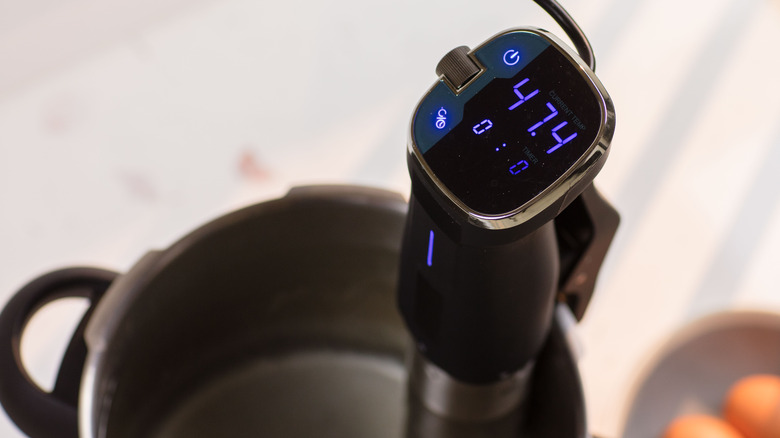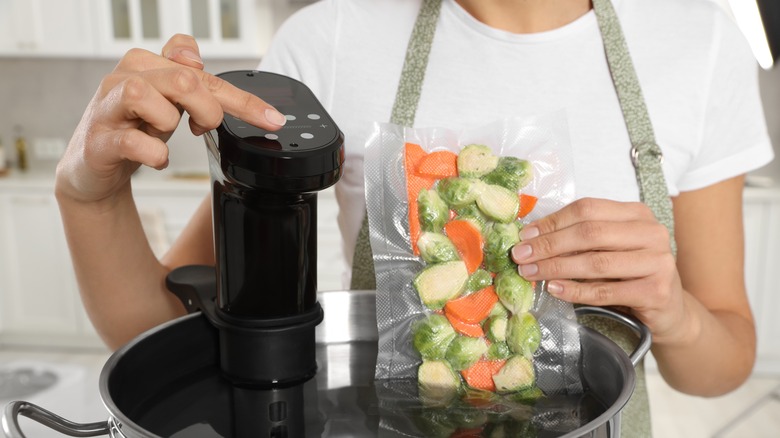Skip The Microwave And Reheat Leftovers Sous Vide
Remember that time you microwaved leftover pasta, only to pull it out half warm, half cold? Or worse, it turned out soggy or dried out, a far cry from that fresh-out-of-the-oven taste. Maybe you've even tried microwaving cooked chicken, only to end up with a dry, rubbery mess. It leaves you wondering: Isn't there a better way to reheat food? A method that keeps it as tasty as it was the first time around?
Enter sous vide — the best-kept kitchen hack you've (maybe) never heard of. Sous vide (pronounced sue-veed, meaning "under vacuum" in French) is a cooking method where food is vacuum-sealed and cooked in a temperature-controlled water bath. Using a device known as a precision cooker, which can be attached to any pot at home, this method offers precision cooking like no other.
If this sounds too good to be true, it's not. Sous vide has an interesting history, starting with Colonel Ambrose McGuckian, a retired army veteran who sought to improve the quality of food in South Carolina hospitals in the 1960s. Through research and experimentation, he found that this method "locked in flavor and streamlined service." Now, more than 55 years later, sous vide is praised by top chefs like Heston Blumenthal. But is it really all it's cracked up to be, or is it just overhyped? Turns out, sous vide has some surprising advantages, particularly for leftovers.
Advantages of sous vide
Taste and texture are where sous vide thrives. If you have leftover teriyaki chicken, add a bit of sauce to the bag before reheating. The sous vide method locks in flavors, giving you a more concentrated taste and texture than you would otherwise get from a simple microwave. And thanks to precise temperature and time control, you can expect consistent results every time. It may take some experimenting to find your ideal combination, but the precision is unmatched.
Another major benefit is safety. If you prefer to use the stove to reheat soup or an oven to reheat roasted vegetables, there's no open flame to monitor with sous vide. You can shower, run errands, or relax with a book while your food reheats.
But before you throw out your microwave, keep in mind the potential limitations. This method doesn't work well with breaded items — foods like chicken pot pie or fried chicken. Try sticking to proteins without breading, soups, and vegetables for the best results. It's also not ideal for quick reheats, as it typically takes around 45 minutes per inch of thickness. And if you're reheating a steak, you will still need to sear it in a hot pan to achieve that perfect crust. But for those who just want a tender, reheated chicken breast, sous vide can be a one-and-done. Plus, you can impress your friends with your newfound cooking prowess — don't worry, they don't have to know they were leftovers!

